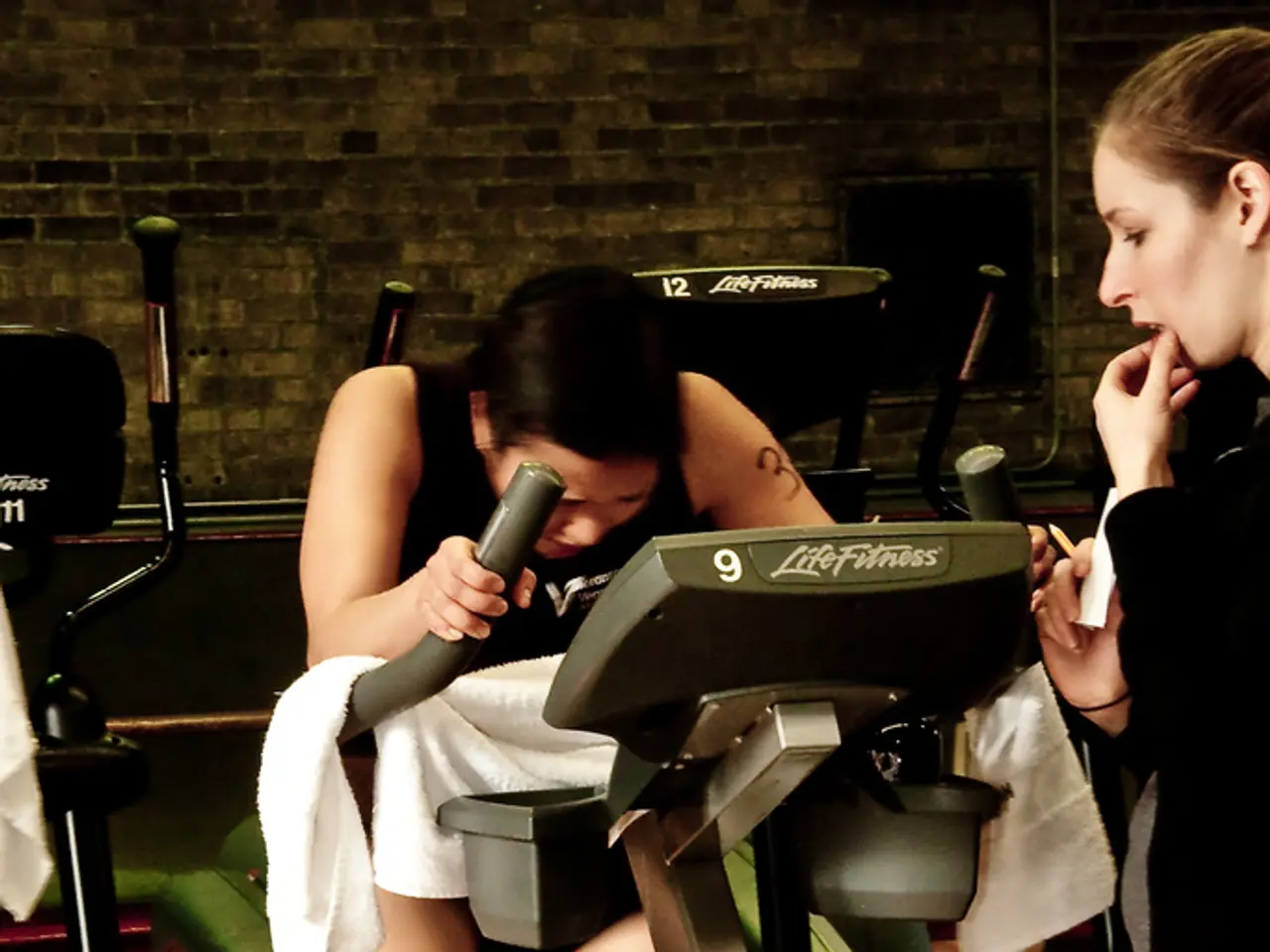Boost your abdominal and pelvic muscles with these five top exercises suggested by a fitness trainer
In today's article, we delve into the importance of training both the core and pelvic floor muscles, a practice that offers numerous benefits for individuals of all ages and backgrounds.
Training these muscles can lead to improved balance, posture, and mobility, as well as enhanced bladder and bowel control. Strengthening the pelvic floor also reduces the risk of pelvic floor dysfunction and provides greater overall core stability. This contributes to better functional mobility, independence, and reduced fall risk, particularly in elderly and neurological populations.
According to recent research in Neurological Sciences, targeted core and pelvic floor muscle training can significantly improve functional outcomes. For instance, it enhances pelvic organ support and function, helping control continence and sexual function. Strengthening the pelvic floor muscles reduces pelvic pain and dysfunction, especially in aging populations affected by menopause, childbirth, or surgery.
Moreover, improved core stability and movement are achieved as the pelvic floor forms part of the "core canister," alongside the diaphragm, abdominal, and back muscles. Training these muscles increases spinal stability, protecting internal organs and supporting efficient movement and posture.
Strengthened pelvic floor and core muscles also improve overall balance and mobility, crucial for elderly individuals to remain independent and avoid falls. Pelvic floor physical therapy aids in enhancing postural control and ease of movement.
In neurological conditions, combining core stability training with physical therapy improves motor control, functional mobility, and walking ability. This combination optimizes force generation and transmission during movement, aiding recovery.
Coordination and breath integration are also key aspects of pelvic floor training. Proper pelvic floor training involves coordinated contraction and relaxation with breath work, such as diaphragmatic breathing, which supports safer and more effective activation, decreasing the risks of pelvic organ prolapse and exercise-induced pelvic pressure.
Aim to do 8-10 repetitions of each move or four to five repetitions on each side for unilateral exercises. The workout requires a Pilates ball and a loop band. Learning how to do a plank can help strengthen the core.
It's essential to engage your core throughout the workout and focus on breath. On exhales, your diaphragm moves up, and your pelvic floor muscles shorten. On inhales, your diaphragm moves down into your abdomen, and your pelvic floor muscles should lengthen and relax.
Everyone can benefit from training their pelvic floor muscles. However, if you have any medical issues that might make the workout more challenging, consult a doctor before starting.
Strengthening pelvic floor muscles can alleviate lower-back pain according to research in Neurological Sciences. Weak pelvic floor can lead to bladder and bowel incontinence. Other pelvic floor exercises are available for further strengthening.
Remember, it's never too late to start taking care of your core and pelvic floor. Subscribe to our newsletter for more tips on maintaining a healthy and active lifestyle!
- Including pelvic floor exercises in fitness-and-exercise routines can alleviate lower-back pain, as suggested by research in Neurological Sciences.
- Furthermore, strengthening the pelvic floor muscles can help control continence and sexual function, enhancing pelvic organ support and function.
- For individuals looking to engage in sports like mixed-martial-arts or improve their health-and-wellness, strengthening the pelvic floor can offer enhanced mobility and balance.
- Yoga and core workouts, combined with pelvic floor training, can aid in improving postural control, facilitating easier movement, and reducing the risk of pelvic pain and dysfunction.




